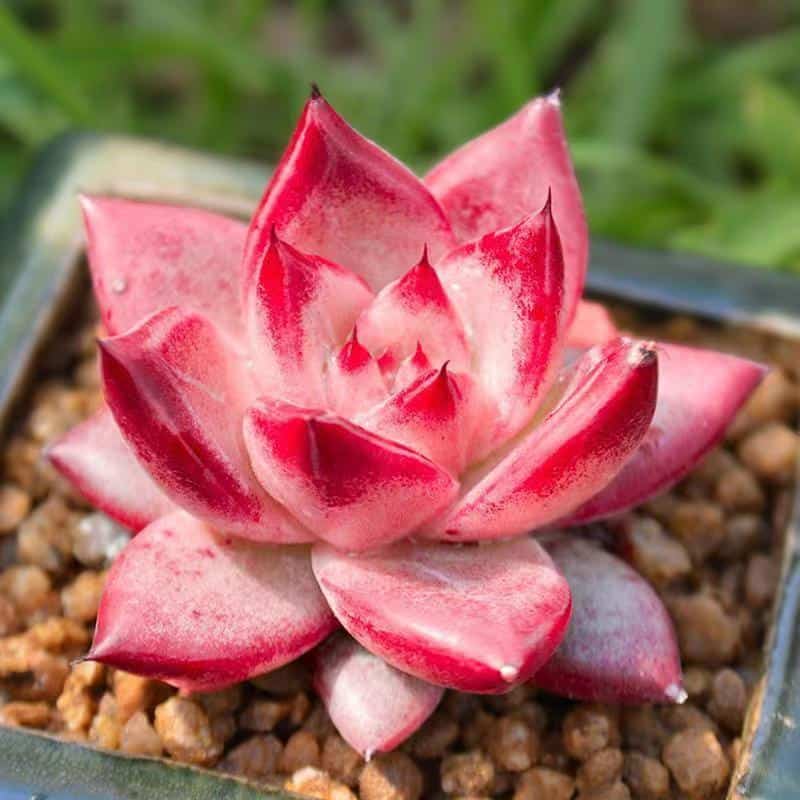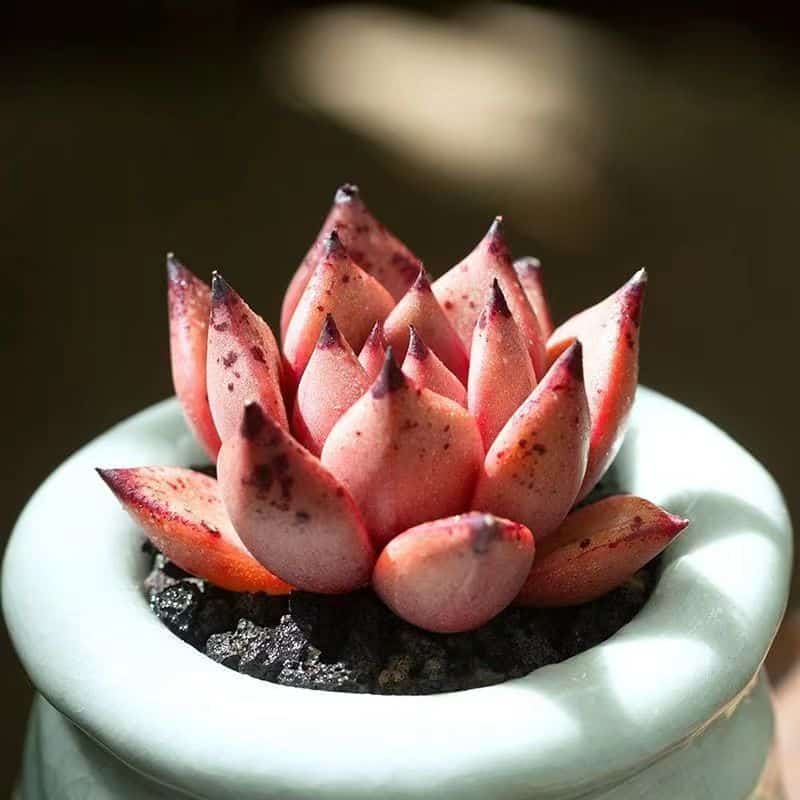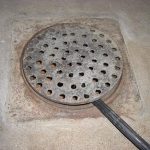Echeveria Agavoides Romeo, also known as the Romeo Wax Agave, is a succulent plant that belongs to Mexico. It is native to the rocky areas of Mexico.
This succulent is beautiful as it has red leaves with sharp edges that give it a very attractive and unique look. Like most succulents, Echeveria Agavoides Romeo also grows up to a height of 6 – 12 inches.
Echeveria Agavoides Romeo doesn’t require much care and can be grown in small pots. Many people confuse such types of succulents as expensive plants to care for based on their looks.
However, this is not the case as Echeveria Agavoides ‘Romeo’ are not expensive to maintain and requires minimal amounts of water.

Echeveria Agavoides Romeo Care
Listed below are some basic requirements that one should be aware of before growing Echeveria Agavoides Romeo.
Sunlight
Echeveria Agavoides ‘Romeo’ has a different set of requirements for sunlight. Like most succulents that require less sunlight and shouldn’t be grown where they are exposed to direct sunlight, this succulent requires a higher amount of sunlight. This plant should be grown where sunlight is accessible or it will die. If Echeveria Agavoides ‘Romeo’ doesn’t receive enough sunlight, it starts to lose its red color, and the leaves dry out.
Furthermore, it also depends on the temperature the plant is grown in. If the plant is grown in a place where there are mild summers, then the plant can be left outside.
However, if the plant is grown in a place with sharp sunlight throughout the year, then it won’t be advisable to keep your plant outside as it may burn due to excessive heat.
Soil
Echeveria Agavoides Romeo’s have a different soil requirement than other plants. This succulent requires well-draining soil because excess water can destroy this plant. There are a variety of soils that fit into this ‘well-draining’ category. Apart from using the best variety of soil for your plant, the main problem is overwatering. Owners usually think they are ignoring their plants and should be watered more. In reality, the thought of ignorance is good for the plant. Almost all succulents require very less water. The same goes for our Echeveria Agavoides Romeo. If one understands this, then comes the issue of soil selection.
The best soil is not based on the nutrients it contains but depends on environmental conditions. By environmental conditions, It means that different areas have different temperatures; hence water dries up differently.
The top five soils for Echeveria Agavoides Romeo are listed below:
- Bonsai Jack Succulent and Cactus Soil
- Superfly Bonsai Succulent And Cactus Soil mix
- Bliss Gardens Organic Succulent and Cactus Soil
- Fat Plants San Diego Premium Cacti and Succulent soil
- Hoffman 10404 Organic Cactus and succulent soil mix
Water
Watering, by far, has been one of the biggest nuisances in the whole growing procedure of the different kinds of succulents. For Echeveria Agavoides ‘Romeo’, watering is a very important procedure as a lack of attention and care might destroy it. It all depends on the environment the plant is growing in. The plant can be left outdoors for long periods if grown in humid areas. Plus, you should just water it once a week. After watering, you should ensure that there isn’t any water left, as over-watering may cause the root to rot.
Temperature and Humidity
Like most succulents, Echeveria Agavoides Romeo’s have certain conditions that must be considered before growing them. The best time to plant your young plant is in spring, as most plants planted in spring are considered healthier and stronger. Moreover, if you plant it in spring, you’ll witness the red bloomy flowers becoming more attractive and fresher. One thing which separates this succulent from others is that it is better to grow this plant outside as it requires more sunlight; hence if one grows it indoors or in damp places, it might affect the plant.
Fertilizer
As mentioned in the beginning, Echeveria Agavoides ‘Romeo’ is a cheap plant to maintain; hence it isn’t an obligation to provide it with fertilizers as it can grow even without them. However, if someone is inclined towards fertilizers, they can use a small amount of fertilizer at the beginning of spring. One should use fertilizers in spring as it helps the plant in growing better, healthy, and more colorful flowers.

Propagating Echeveria Agavoides Romeo
This is the single most difficult task while growing Echeveria Agavoides Romeo. As this process requires very careful steps, it should be done in spring when it’s the plant’s growing period. Propagation can be done through leaves, seeds, or offsets.
Pests and Plant Diseases
Pests Diseases
It may be hard to believe, but Echeveria Agavoides Romeo’s are not susceptible to a lot of pests. However, there is a possibility that small bugs or insects may cause trouble. One shouldn’t worry if these bugs appear, as they can be removed through normal medicines.
Plant Diseases
Echeveria Agavoides ‘Romeo’ is not very susceptible to diseases, but there is a possibility that your plant may have the disease called Black Rot. As the name says, black rot causes the plant to turn black and eventually rot. To counter this disease, fungicide sprays can be used.
Conclusion
The whole procedure of this succulent ‘Echeveria Agavoides Romeo’ is not that hard as it is quite like its other family members, the other succulents. The growth process only requires knowledge about the plant and what’s best for it. If you’re worried about your plant, you can always take it to the nearest plant store, where a professional gardener can guide you better. Hope you enjoy the process. Good luck and Happy Growing!!!




